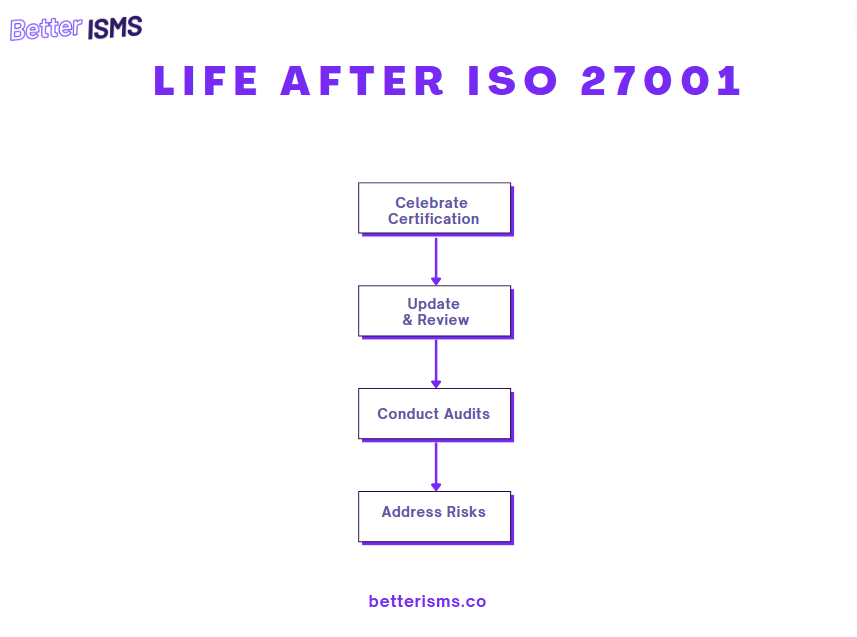ISO 27001: life after obtaining the certification.
There's a life after obtaining the ISO 27001 certification. Actually, it's where the journey begins.
The Trap of 'Check-and-Forget'
You did it. Your company is now ISO 27001 certified. There's excitement, a team celebration, and a feeling of pride. With the certificate in hand, it's easy to think the job is done and move on. However, this mindset can be a pitfall.
Why Resting on Laurels Can Be Risky
Being ISO 27001 certified isn't just about getting a certificate; it's about keeping up with a promise to always prioritize information security. Treating it as a one-off win misses the ongoing value of the certification.
Keeping Your ISMS Strong: An Ongoing Task
Review Documentation Often: Regularly check and update your policies and procedures. They need to stay up-to-date.
Track Security Metrics: Keep an eye on your security performance indicators. They tell you how well your system is working.
Keep analysing new risks: As new risks pop up, make sure your risk assessments evolve too. Coming up next year with the same risks as last year might indicate you don’t take risk management seriously. Consider risks shown by your ISMS indicators, between other sources of risk identification. Elaborate risk treatment plans for these new risks.
Implement your N-1 action plans: The initial certification process led to the identification of risk treatment plans and audit findings. Consider them as action plans you must implement before next audit (or deadline can also be after the audit, the important is being in control).
Keep Up With New Rules: New security regulations come up all the time. Make sure you're always identify them and check whether they apply to your context.
Update the Statement of Applicability (SOA): As you make changes (such as implementing your action plans), ensure your SOA reflects them.
Plan your audits: You’re a couple of months after your initial certification and started working on implementing action plans? It might be a good time to secure your internal and external audit spots. Contact your auditors and make sure follow-up audits are already booked.
Train Your Team: Regular training sessions help keep everyone aware and ready. Since security awareness is continuous and new risks pop up (Generative AI?), think about educating your staff in a way or another.
Close the N-1 action plans you had to. If your deadlines were before the follow-up audit, give priority to the closure of your risk treatment plans and corrective action plans resulting from internal and external audits. If precipitated closure would do more harm than good, reschedule wisely the deadlines.
Make sure your current year risk treatment plans are defined. Owner, deadline, precise tasks.
Get Ready for Internal Audits: Before you dive deep, update all necessary documents and conduct a thorough internal check. Look one more time whether the action plans you were supposed to close have been closed. Make sure your newly defined action plans make sense.
Prepare for External Audits: Fix any easy issues before the big external review, and do one last SOA update.
Trust in Your Plan: You've done the work, you've stayed on top of things. Now, trust in your process and team.
Your ISO 27001 Path: It Never Really Ends
Staying committed to ISO 27001 goes beyond the day you get certified. It’s a continuous journey towards better security. And the rewards – like trust from customers and protection against threats – are well worth the effort.
Follow Better ISMS for guidance on staying on course and making the most of your ISO 27001 certification.





